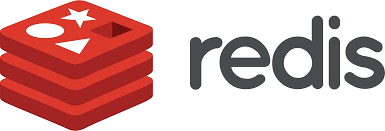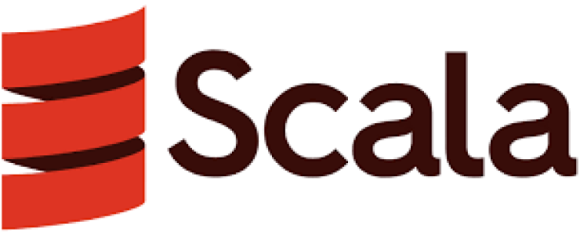
Entwicklung umweltfreundlicher Technologien mit energieeffizienten Werkzeugen und Lösungen

Kunde
Trimble ist ein führender Anbieter von Technologielösungen, die Positionierung, Modellierung, Konnektivität und Datenanalyse nutzen, um Kunden zu einem bisher unerreichten Niveau an Produktivität, Qualität, Sicherheit und Nachhaltigkeit zu verhelfen. Von Baustellen bis hin zu landwirtschaftlichen Feldern verändern die Lösungen von Trimble die Art und Weise, wie Arbeit erledigt wird.
Branche
Dienstleistungen
Land
Unternehmensgröße

Eine grünere Zukunft gestalten
Gebäude verbrauchen etwa 40 % der weltweiten Energie, weshalb die Planung energieeffizienter Gebäude eine entscheidende Priorität darstellt. Daher hat sich Sefaira mit seinem fundierten Fachwissen im Bereich Bauphysik darauf konzentriert, innovative Tools für Architekten und Ingenieure zu entwickeln.
Seit 2014 ist ASSIST Software ein wichtiger Partner, der wesentliche Softwareentwicklung und technisches Fachwissen bereitstellt und die Entwicklung der Plattform mit Schwerpunkt auf Innovation begleitet hat. Durch agile Methoden haben wir die Herangehensweise von Designern an die Architektur verändert.
Sefaira ermöglicht es Architekten nun, energieeffiziente, nachhaltige, komfortable und kostengünstige Gebäude zu entwerfen und damit die Zukunft des Designs neu zu gestalten.
Sefaira – von der Idee zum Durchbruch
Sefaira begann als Vision, die Art und Weise zu revolutionieren, wie Architekten und Ingenieure energieeffiziente und nachhaltige Gebäude entwerfen. Integriert in die Modellierungssoftware SketchUp und Revit 3D hilft es Anwendern, ihre Ideen für grünes Bauen zu verwirklichen. Das Herzstück dieser Lösung ist eine zertifizierte Energiesimulations-Engine, die sicherstellt, dass jede Entwurfsentscheidung auf genauen Daten basiert.
ASSIST Software hat wichtige Mikroservices wie die Anwendung zur Benutzer- und Berechtigungsverwaltung entwickelt. Durch die Nutzung von AWS hat ASSIST eine Lösung mit flexibler Kapazität, Geschwindigkeit, Agilität und globaler Reichweite implementiert. Dadurch konnte sich das Team darauf konzentrieren, die Grenzen des energieeffizienten Designs zu erweitern, anstatt sich um die Verwaltung der Infrastruktur zu kümmern.

Woran wir gearbeitet haben:
Nachhaltige Innovation
mit fortschrittlichen Technologien verbinden
Wir arbeiten daran, umweltbewusste Lösungen voranzutreiben, die Designern und Ingenieuren die Möglichkeit geben, umweltfreundliche, leistungsstarke Projekte zu entwickeln. Wir wählen die beste Technologie aus, um herausragende Green Tech-Lösungen voranzubringen.
Wie haben wir Herausforderungen gemeistert?
Wir haben einen komplexen Orchestrator unter Verwendung von Docker-Containern entwickelt, mit dem die Entwickler Entwicklungs- und Testumgebungen aufbauen und so ihren Arbeitsablauf verbessern können. Das Stackman-Tool vereinfacht diesen Prozess und verwaltet gleichzeitig die gesamte Microservices-Plattform effektiv, wodurch eine reibungslose Integration und hohe Effizienz gewährleistet werden.
Eine weitere technische Herausforderung bestand darin, das alte Berechtigungsmanagementsystem mit der neuen integrierten Plattform zu synchronisieren. Diese Integration erforderte die Zusammenführung mehrerer Funktionen zu einem kohärenten System, was umfangreiche Tests und sorgfältige Planung erforderte.

Eine auf Vertrauen basierende Geschäftspartnerschaft
Aufbauend auf einer starken Partnerschaft haben wir unsere Rolle nach der Übernahme von Sefaira Ltd. durch Trimble Inc. im Jahr 2016 erweitert. Wir haben verschiedene Aufgaben übernommen, darunter die Entwicklung von SketchUp-Produkten und die Bereitstellung von laufender Wartung und DevOps-Support.
Ein Beispiel für unsere erweiterte Rolle ist die Arbeit an einer Plattform, die Einblicke in klimatische und ökologische Einschränkungen bietet. Das Tool hilft Architekten zu verstehen, wie sich diese Faktoren auf Entwürfe auswirken, und unterstützt sie dabei, praktische Lösungen für nachhaltiges Bauen und die Gestaltung von Außenbereichen zu finden.
Weniger Nacharbeit für Ingenieure
Greifen Sie auf wichtige Daten zum Standort und zum Klima zu, um fundierte Entscheidungen zu treffen und kostspielige Nacharbeiten zu vermeiden.
Benutzerdefinierte Dashboards
Verwandeln Sie Ihre Daten mühelos in aussagekräftige Grafiken für Präsentationen vor Interessengruppen.
Schnellere Ergebnisse für Kunden
Erstellen Sie überzeugende Grafiken, um Ergebnisse zu präsentieren und schneller die Zustimmung des Kunden zu erhalten.
Geschäftsziele erreicht
Schaffen Sie Mehrwert, sparen Sie Zeit und optimieren Sie Kosten durch innovative Ansätze.
Starten Sie Entwicklungs- und Testumgebungen ohne spezielle DevOps-Interventionen.
Verfügen Sie über ein einziges integriertes System für Benutzerverwaltung, Lizenzen und Unternehmen.

"ASSIST ist seit über einem Jahr ein hochgeschätzter Partner von Sefaira. Das Team hat unsere Unternehmenswebsite entwickelt und arbeitet mit uns gemeinsam an der Schaffung einer Support-Infrastruktur für unsere Kunden. Die Zusammenarbeit mit dem ASSIST-Team ist sehr angenehm – sie machen uns die Arbeit aus der Ferne sehr leicht, sodass es fast so ist, als wären sie hier im Büro. Besonders hervorheben möchte ich die sehr positive und proaktive Einstellung, die Schnelligkeit, die sehr kurze Bearbeitungszeiten ermöglicht, und die technischen Fähigkeiten des Teams. Das Team hat uns bei technischen Entscheidungen gut beraten und hilft uns dabei, unsere Website auf einem sehr hohen Niveau zu halten."
Vom Produktdesign bis zur Entwicklung und Fertigstellung. Wir garantieren außerordentliche Produkte.
HealthBeacon


StatSports
Skalierbare, sichere und optimierte Lösungen für den Erfolg Ihres Unternehmens.
Für Geschäftsanfragen:
hello@assist.ro
Unsere Adresse:
ASSIST Software GmbH, Am Technologiezentrum 5, 86159, Augsburg, Germany
Häufig gestellte Fragen
1. Können Sie KI in ein bestehendes Softwareprodukt integrieren?
Selbstverständlich. Unser Team kann Ihr aktuelles System bewerten und Ihnen empfehlen, wie KI-Funktionen, wie Automatisierung, Empfehlungsmaschinen oder Predictive Analytics, effektiv integriert werden können. Ob es um die Verbesserung der Benutzererfahrung oder die Optimierung von Abläufen geht, wir sorgen dafür, dass KI dort eingesetzt wird, wo sie einen echten Mehrwert bietet, ohne Ihre Kernfunktionen zu beeinträchtigen.
2. Welche Arten von KI-Projekten hat ASSIST Software bereits umgesetzt?
Wir haben KI-Lösungen für verschiedene Branchen entwickelt – von der Verarbeitung natürlicher Sprache in Kundensupport-Plattformen bis hin zu Computer Vision in der Fertigung und Landwirtschaft. Unsere Expertise umfasst Empfehlungssysteme, intelligente Automatisierung, Predictive Analytics und maßgeschneiderte Machine-Learning-Modelle, die auf spezifische Geschäftsanforderungen zugeschnitten sind.
3. Wie sieht der Entwicklungsprozess von ASSIST Software aus?
Der von uns eingesetzte Software Development Life Cycle (SDLC) definiert die folgenden Phasen für ein Softwareprojekt. Unsere SDLC-Phasen umfassen Planung, Anforderungserfassung, Produktdesign, Entwicklung, Tests, Bereitstellung und Wartung.
4. Welche Softwareentwicklungsmethodik verwendet ASSIST Software?
ASSIST Software nutzt in erster Linie agile Prinzipien für Flexibilität und Anpassungsfähigkeit. Das bedeutet, dass wir Projekte in kleinere, überschaubare Sprints unterteilen, was ein kontinuierliches Feedback und Iteration während des gesamten Entwicklungszyklus ermöglicht. Wir integrieren auch Elemente aus anderen Methoden, um die Effizienz bei Bedarf zu steigern. Zum Beispiel verwenden wir Scrum für Projektrollen und Zusammenarbeit und Kanban-Boards, um Arbeitsabläufe zu sehen und Aufgaben zu verwalten. Gemäß dem Wasserfall-Ansatz legen wir in der Anfangsphase Wert auf eine genaue Planung und Dokumentation.
5. Ich erwäge eine benutzerdefinierte Anwendung. Sollte ich mich auf eine Desktop-, Mobil- oder Web-App konzentrieren?
Wir bieten Software-Beratungsdienste an, um die Art der Software zu bestimmen, die Sie auf der Grundlage Ihrer spezifischen Anforderungen benötigen. Bitte erkunden Sie, welche Art der App-Entwicklung zu Ihrem maßgeschneiderten Produkt passt.
- Eine Webanwendung wird in einem Webbrowser ausgeführt und ist von jedem Gerät mit Internetverbindung aus zugänglich. (z.B. Online-Shop, Social-Media-Plattform)
- Entwickler mobiler Apps entwerfen Anwendungen hauptsächlich für Smartphones und Tablets, z. B. Spiele und Produktivitätstools. Sie können jedoch auf andere Geräte, wie z. B. Smartwatches, ausgeweitet werden.
- Desktop-Anwendungen werden direkt auf einem Computer installiert (z. B. Bildbearbeitungssoftware, Textverarbeitungsprogramme).
- Unternehmenssoftware verwaltet komplexe Geschäftsfunktionen innerhalb eines Unternehmens (z. B. Customer Relationship Management (CRM), Enterprise Resource Planning (ERP)).
6. Mein Softwareprodukt ist komplex. Sind Sie mit der Scaled Agile Methodik vertraut?
Wir sind seit 30 Jahren in der Software-Engineering-Branche tätig. In dieser Zeit haben wir an maßgeschneiderter Software gearbeitet, die kreatives Denken, Innovation und maßgeschneiderte Lösungen erforderte.
Scaled Agile bezieht sich auf Frameworks und Praktiken, die großen Unternehmen bei der Einführung agiler Methoden helfen. Traditionelles Agile ist für kleine, selbstorganisierende Teams konzipiert. Scaled Agile adressiert die Herausforderungen bei der Implementierung von Agile in mehreren Teams, die an komplexen Projekten arbeiten.
SAFe bietet einen strukturierten Ansatz für die Abstimmung von Teams, die Koordination der Arbeit und die Bereitstellung von Mehrwert in großem Maßstab. Es konzentriert sich auf Zusammenarbeit, Kommunikation und kontinuierliche Bereitstellung für optimale kundenspezifische Softwareentwicklungsdienste.
7. Wie wähle ich das beste Collaboration-Modell mit ASSIST Software aus?
Wir bieten flexible Modelle an. Denken Sie über Ihr Projekt nach und finden Sie heraus, welche Modelle für Sie geeignet sind.
- Engagiertes Team: Ideal für komplexe, langfristige Projekte, die eine hohe Kontinuität und Zusammenarbeit erfordern.
- Team Augmentation: Perfekt für kurzfristige Projekte oder bestehende Teams, die zusätzliches Fachwissen benötigen.
- Projektbasiertes Modell: Am besten für klar definierte Projekte mit klaren Ergebnissen und einem festen Budget.
Kontaktieren Sie uns, um die Vor- und Nachteile der einzelnen Modelle zu besprechen.











